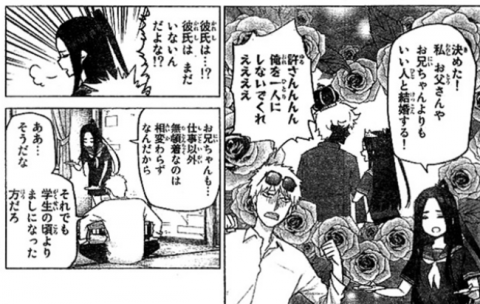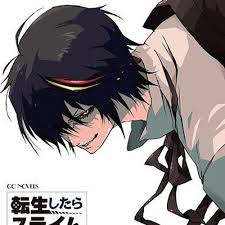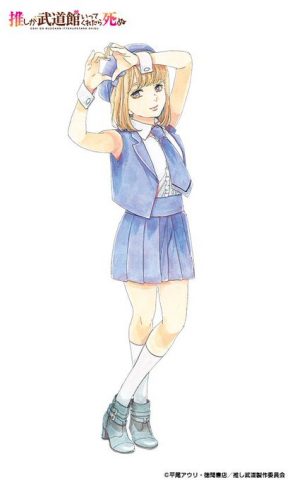Golden Kamuy is a hugely popular anime. It is set in Hokkaido after the Russo-Japanese War. At the time, Japan was desperately trying to invade the Korean Peninsula and rise to become a powerful nation. Until Japan's defeat in World War II, this was a time when Japan was solely focused on expanding its military and territory. We have put together a story set in this era based on historical facts, showing how the characters were involved in the Russo-Japanese War.
Invincible Sugimoto during the Russo-Japanese War
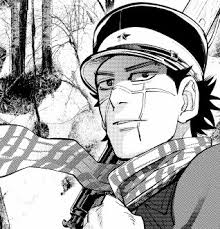
Source: Golden Kamuy ©Noda Satoru/Shueisha, Golden Kamuy Production Committee
Sugimoto Saichi was a member of the First Division. In the first place, divisions were formed in 1888 by reorganizing the units that had been called garrisons in each region. The First Division, to which Sugimoto belonged, was formerly the Tokyo Garrison, and participated in the Sino-Japanese War and the Russo-Japanese War. It is unclear whether Sugimoto took part in the Sino-Japanese War, but the First Division also took part in the Siege of Port Arthur during the Russo-Japanese War, losing many of their compatriots. Sugimoto was no exception and took part in this battle. It is likely that his friend Torajiro was killed in this battle.
Invincible Sugimoto after the Russo-Japanese War
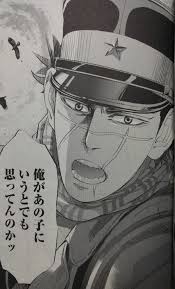
Source: Golden Kamuy © Noda Satoru / Shueisha, Golden Kamuy Production Committee
Sugimoto's wartime achievements would have been enough to earn him a medal, but he was discharged after punching a superior officer he disliked. At the time in Japan, complete thought control was in place, but Sugimoto probably wasn't too bothered by that. He lives a carefree life, but is seduced by a sense of responsibility and travels to Hokkaido for the woman he loves. As for the First Division, it was reorganized, but changed its name and continued to exist as a unit during the Pacific War. The First Division was also deeply involved in the February 26 Incident. But that's a story for another time.
The 7th Division during the Russo-Japanese War
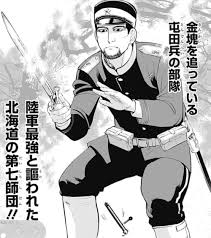
Source: Golden Kamuy © Noda Satoru / Shueisha, Golden Kamuy Production Committee
The 7th Division was originally a Tondenhei (garrison soldiers), but was renamed the 7th Division after a reorganization. The 7th Division is known as the strongest unit, and is led by a man named Osako, who has only ever won battles at home and abroad, including the Boshin War, the Yoshinan War, and the Sino-Japanese War. The 7th Division was sent to Russia to take part in the Siege of Port Arthur, where they fought alongside Sugimoto. In fact, it was predicted from the beginning that there would be far too many casualties in this battle. There were many attempts to change the strategy, but in the end the Emperor issued an imperial decree, and the battle entered a fierce one with only 40% of the troops surviving. Japan's victory in this battle gave it the upper hand, but it is said that when people heard of Japan's victory in the Russo-Japanese War, although they were happy, there was a high possibility that their relatives and close friends had died, and they were not in a state of joy.
The 7th Division after the Russo-Japanese War
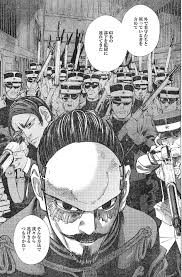
Source: Golden Kamuy © Noda Satoru / Shueisha, Golden Kamuy Production Committee
In this work, Lieutenant Tsurumi and his men betray their country and start going after the gold bars, because the country did not even collect compensation from Russia for the deaths of their compatriots one after another. This is quite unusual in Japan, where ideological control was practiced. However, in terms of the idea of war as something that enriches the country, Lieutenant Tsurumi was actually right. So what was the 7th Division really like? They were called the strongest division even after the war, and even received an imperial envoy from the emperor. They were exaggeratedly hailed as heroes because Japan had made so many sacrifices in the Russo-Japanese War that it became difficult to control the emotions of the people.
Hokkaido Ainu who participated in the Russo-Japanese War
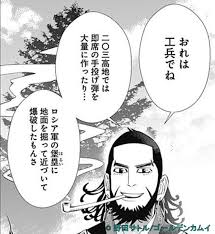
Source: Golden Kamuy © Noda Satoru / Shueisha, Golden Kamuy Production Committee
Just as Kiroranke was a factory worker in the 7th Division, the Russo-Japanese War was also the first war in which Hokkaido Ainu participated and received medals. At the time, the Ainu were prohibited from passing on their culture from generation to generation due to the assimilation policy, and they were called natives and discriminated against. The Hokkaido Ainu participated in the Russo-Japanese War in the hope of improving their status in Japan. Although the number of participants was not large, many of them lamented the low status of their ethnic group.
What happened to the Hokkaido Ainu who participated in the Russo-Japanese War
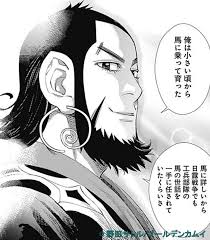
Source: Golden Kamuy © Noda Satoru / Shueisha, Golden Kamuy Production Committee
Some Ainu were recognized for their achievements in the Russo-Japanese War and received medals, but in the end, it did not lead to an improvement in their status. In fact, even the Ainu can receive medals if they fight for their country in war. This is why the advertisement ends up telling everyone to work hard and fight for their country. It was only after World War II that discrimination against the Ainu began to disappear.
Summary of the Russo-Japanese War and Characters
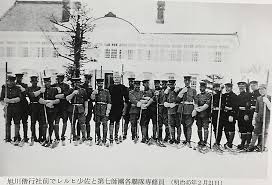
Source: Golden Kamuy © Noda Satoru / Shueisha, Golden Kamuy Production Committee
I studied the Russo-Japanese War when I was a student, but I don't think it's covered as much as the World War II. However, the fact is that the Russo-Japanese War was a war in which a small country, Japan, defeated a powerful nation, Russia, and although it did not bring about reparations, it did bring about many benefits, such as a review of unequal treaties in an era when discrimination against people of color was strong, and an improvement in Japan's status. I'm looking forward to seeing how the story of Golden Kamuy will unfold and what characters will appear in the future. Perhaps people related to the Russo-Japanese War will make another appearance.

